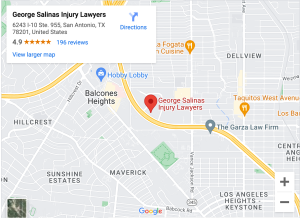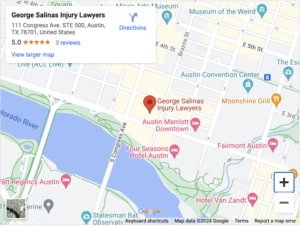
The problem of evidence is a problem we have all dealt with any number of times, regardless of whether a legal claim was involved. Have you ever been accused of something? Have you ever accused someone else of something?: How do you know if a claim is true or not? How do you prove whether it’s true or not? These are questions of evidence, and they are fundamental to all law, not only personal injury law.
The Texas Rules of Evidence

The Texas Rules of Evidence govern the admissibility of evidence in Texas courts. These rules of evidence also apply in federal courts located in Texas if a state law issue arises. Likewise, when litigating a federal issue in Texas courts, the Federal Rules of Evidence apply.
Types of Evidence
Following is a list of common forms of evidence that parties present in personal injury claims:
- Physical evidence includes tangible evidence such as fingerprints, a wounded human body, a damaged motorcycle, and more.
- Photographic evidence includes both still photos and videos. In many cases, CCTV footage of an accident is unintentionally generated.
- Testimonial evidence is testimony offered by witnesses. There are two main kinds of witnesses who offer testimony: eyewitnesses and expert witnesses.
- Documentary evidence includes contracts, waivers of liability, and other legally effective documents. A speeding citation is another form of documentary evidence.
- Medical records that healthcare providers generate are among the most credible of all forms of evidence.
- Circumstantial evidence can prove the existence of circumstances that tend to establish liability. Evidence that the defendant sent a text message immediately prior to a truck accident, for example, might help prove that the accident was the defendant’s fault.
There is often a difference between the evidentiary standards that insurance companies demand and the evidentiary standards that courts demand.
Inadmissible Evidence
The Texas Rules of Evidence exclude many different types of evidence. Following are only three of literally hundreds of possible examples.
Irrelevance
All evidence must be relevant to an issue at hand to be admissible. Suppose, for example, that an eyewitness offers opinion evidence that only an expert is qualified to offer. The witness might, for example, offer their opinion that the defendant is a sociopath when only an expert in psychology is qualified to offer such testimony. Such testimony is irrelevant.
Prejudicial Effect
A court can exclude relevant evidence if its prejudicial effect exceeds its relevance. Imagine a sexual assault lawsuit where the defendant claims the victim consented to sexual activity. The defendant wants to introduce evidence that the defendant had consented to many previous sexual encounters of the same nature. Even if the court finds the evidence relevant, it will probably exclude it.
The Hearsay Rule
“Hearsay” is any out-of-court statement, written or verbal, that a party seeks to use to prove the truth of the statement. A common yet somewhat surprising example is a police report issued after a car accident. The solution to this problem is to simply call the police officer who wrote the report to testify as a witness to the immediate aftermath of the accident.
There are nearly two dozen exceptions to the hearsay rule.
Applicable Standards of Proof
A standard of proof is a standard that tells you how much admissible evidence you need to prevail in court. Three of the most important and commonly used standards of proof are “preponderance of the evidence,” “clear and convincing evidence,” and “guilty beyond a reasonable doubt.”
“Preponderance of the Evidence”
A “preponderance of the evidence” is the standard of proof that most often applies in personal injury lawsuits and to civil lawsuits in general. You meet the preponderance of the evidence standard if your evidence outweighs the opposing party’s evidence, even if only by the weight of a peppercorn.
You might think of the preponderance of the evidence standard as the “51% standard.” You meet this standard if you can convince the court that it is at least 51% likely that your version of events is true.
“Clear and Convincing Evidence”
“Clear and convincing evidence” is a middle-ground standard that applies primarily in civil cases as well. It is a more difficult standard to meet than the “preponderance of the evidence” standard, but it is easier to meet than the “guilty beyond a reasonable doubt” standard.
In personal injury law, it typically applies only to a plaintiff’s claim that they deserve punitive damages in addition to economic and non-economic damages.
“Guilty Beyond a Reasonable Doubt”
Guilty beyond a reasonable doubt is the most difficult standard of proof to meet. It never applies in personal injury cases—Texas only uses it in criminal prosecutions. The difficulty of meeting the “beyond a reasonable doubt” standard explains why it is possible to win an acquittal in a murder case but still lose a wrongful death lawsuit over the same death.
It’s Part of a San Antonio Personal Injury Attorney’s Job To Gather Admissible Evidence
If you hire a San Antonio personal injury attorney to represent you, they will work with you to gather admissible evidence to prove your claim. As you probably noticed above, however, it’s not always obvious whether evidence is or is not admissible. That is why you need the help of a lawyer.


